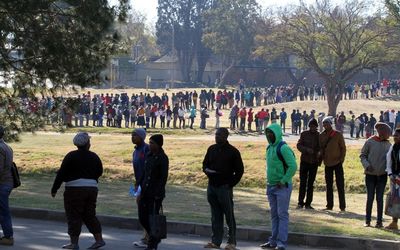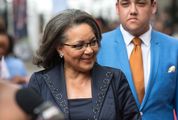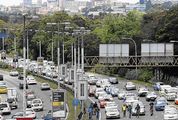THE number of people with jobs in SA has more than doubled over the past 21 years to 15.66-million this year from 7.97-million in 1994, according to data compiled by the South African Institute of Race Relations (SAIRR).
Although this was a "largely unacknowledged success", an insufficient number of jobs was created, so the unemployment rate has remained stubbornly high, it said in the December issue of its Fast Facts summary.
In 1990 the mining industry employed 692,900 people, which had slumped to 489,515 by June 2015, but the number of jobs in the finance sector soared from 186,280 to 1.98-million.
The government sector now employs 2.03-million people, from 1.3-million in 1990, of whom about half are employed in provincial administrations.
"Other than incubating the black middle class, the expanded civil service has been of little benefit to SA and is now the primary reason for the government’s fiscal crisis. Essentially, the public service has become a welfare scheme for the middle class," the SAIRR said.
The number of jobs SA has created is reflected in a decrease in the dependency ratio. In 1994, for every 100 people in work, there were 380 out of work. By 2015, two and a half people were out of work for every employed person. The definition includes the officially unemployed, those who chose not to work, or those who were too old or too young.
Among the African population, the dependency ratio has fallen from 490 per 100 to 280 per 100 over this period, while for the white population it has dropped from 220 per 100 to 130 per 100.
The SAIRR bases its calculations on a total SA population of 54.96-million people in 2015, of whom 20.89-million were economically active. The official unemployment rate was 25.5% and the expanded unemployment rate was 34.9%.
The SAIRR said a more meaningful measure would be the labour market participation rate, which reflected the proportion of the economically active people of working age. That figure was 58.1% in 2015. In 1994, it was 47.7%. The participation rate for the black population had improved by 13 percentage points over 21 years, against four percentage points for the white population, but it remained 11 percentage points lower for blacks than for whites, the institute said.
SA’s unemployment rate is high even by emerging market standards. Botswana’s rate is 20%, Egypt’s is 12.7% and the Philippines’ is 6.5%.

Prospective job seekers queue to be registered outside the Alberton Civic Centre during a youth job creation initiative in June. Picture: THE SOWETAN
THE number of people with jobs in SA has more than doubled over the past 21 years to 15.66-million this year from 7.97-million in 1994, according to data compiled by the South African Institute of Race Relations (SAIRR).
Although this was a "largely unacknowledged success", an insufficient number of jobs was created, so the unemployment rate has remained stubbornly high, it said in the December issue of its Fast Facts summary.
In 1990 the mining industry employed 692,900 people, which had slumped to 489,515 by June 2015, but the number of jobs in the finance sector soared from 186,280 to 1.98-million.
The government sector now employs 2.03-million people, from 1.3-million in 1990, of whom about half are employed in provincial administrations.
"Other than incubating the black middle class, the expanded civil service has been of little benefit to SA and is now the primary reason for the government’s fiscal crisis. Essentially, the public service has become a welfare scheme for the middle class," the SAIRR said.
The number of jobs SA has created is reflected in a decrease in the dependency ratio. In 1994, for every 100 people in work, there were 380 out of work. By 2015, two and a half people were out of work for every employed person. The definition includes the officially unemployed, those who chose not to work, or those who were too old or too young.
Among the African population, the dependency ratio has fallen from 490 per 100 to 280 per 100 over this period, while for the white population it has dropped from 220 per 100 to 130 per 100.
The SAIRR bases its calculations on a total SA population of 54.96-million people in 2015, of whom 20.89-million were economically active. The official unemployment rate was 25.5% and the expanded unemployment rate was 34.9%.
The SAIRR said a more meaningful measure would be the labour market participation rate, which reflected the proportion of the economically active people of working age. That figure was 58.1% in 2015. In 1994, it was 47.7%. The participation rate for the black population had improved by 13 percentage points over 21 years, against four percentage points for the white population, but it remained 11 percentage points lower for blacks than for whites, the institute said.
SA’s unemployment rate is high even by emerging market standards. Botswana’s rate is 20%, Egypt’s is 12.7% and the Philippines’ is 6.5%.


















Change: -0.95%
Change: -1.26%
Change: -1.23%
Change: -0.89%
Change: -2.34%
Data supplied by Profile Data
Change: -0.39%
Change: -0.31%
Change: -0.95%
Change: 0.00%
Change: -0.63%
Data supplied by Profile Data
Change: 0.26%
Change: 0.02%
Change: 0.47%
Change: 0.36%
Change: -0.58%
Data supplied by Profile Data
Change: 0.71%
Change: 3.31%
Change: 1.50%
Change: -1.43%
Change: -3.85%
Data supplied by Profile Data